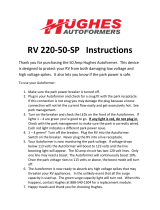
3
Thank You
Your decision to own this McIntosh MC303 Power Ampli-
fier ranks you at the very top among discriminating music
listeners. You now have “The Best.” The McIntosh dedica-
tion to “Quality,” is assurance that you will receive many
years of musical enjoyment from this unit.
Please take a short time to read the information in this
manual. We want you to be as familiar as possible with all
the features and functions of your new McIntosh.
Please Take A Moment
The serial number, purchase date and McIntosh Dealer
name are important to you for possible insurance claim or
future service. The spaces below have been provided for
you to record that information:
Serial Number: __________________________________
Purchase Date: __________________________________
Dealer Name: ___________________________________
Technical Assistance
If at any time you have questions about your McIntosh
product, contact your McIntosh Dealer who is familiar
with your McIntosh equipment and any other brands that
may be part of your system. If you or your Dealer wish
additional help concerning a suspected problem, you can
receive technical assistance for all McIntosh products at:
McIntosh Laboratory, Inc.
2 Chambers Street
Binghamton, New York 13903
Phone: 607-723-1545
Fax: 607-724-0549
Customer Service
If it is determined that your McIntosh product is in need of
repair, you can return it to your Dealer. You can also return
it to the McIntosh Laboratory Service Department. For
assistance on factory repair return procedure, contact the
McIntosh Service Department at:
McIntosh Laboratory, Inc.
2 Chambers Street
Binghamton, New York 13903
Phone: 607-723-3515
Fax: 607-723-1917
Copyright 2008 © by McIntosh Laboratory, Inc.
Table of Contents
General Information
Safety Instructions ............................................................. 2
Thank You and Please Take a Moment .............................. 3
Technical Assistance and Customer Service ..................... 3
Table of Contents ............................................................... 3
General Information .......................................................3-4
Connector Information ...................................................... 4
Introduction ........................................................................ 4
Performance Features ........................................................ 4
Dimensions ........................................................................ 5
Installation ......................................................................... 6
Rear Panel Connections and Switch .................................. 7
How to Connect .............................................................. 8-9
Connection Diagrams (Separate Sheet) MC1A and MC1B
Front Panel Displays and Controls ....................................10
How to Operate .................................................................11
Technical Description ..................................................12-15
Photos ...........................................................................16 -17
Specifications ....................................................................18
Packing Instruction ...........................................................19
Caution: The MC303 Amplifier weight is 150 pounds (70.3
kilograms). It requires two or more persons to safely
handle when moving the amplifier.
1. The following Connecting Cable is available from the McIn-
tosh Parts Department:
Power Control Cable Part No. 170-202
Six foot, 2 conductor shielded, with two 1/8 inch stereo
mini phone plugs.
2. For additional connection information, refer to the owner’s
manual(s) for any component(s) connected to the MC303.
3. The MC303 mutes the speaker output for approximately two
seconds when first turned on.
4. In the event the MC303 overheats, due to improper ventilation
and/or high ambient temperature, the protection circuits will
activate. The Front Panel Power Guard LEDs will continu-
ously indicate ON and the audio will be muted. When the
MC303 has returned to a safe operating temperature, normal
operation will resume.
5. For the best performance it is important to minimize an im-
pedance mismatch. An impedance mismatch can occur when a
Loudspeaker of a given impedance rating is connected to the
MC303 Output Terminals with a different impedance rating.
For example, a Loudspeaker with an impedance rating of 2
Ohms is connected to the MC303 8 Ohm Output Terminals.
The impedance of a Loudspeaker actually varies as the
Loudspeaker reproduces different frequencies. As a result, the
nominal impedance rating of the Loudspeaker (usually mea-
sured at a midrange frequency) might not always agree with
the impedance of the Loudspeaker at low frequencies where
the greatest amount of power is required.





















